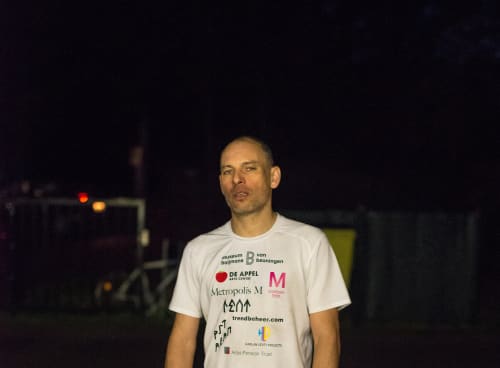In his second exhibition with the gallery, Jeroen Jongeleen presents three works from ongoing projects. Since the 90s, Jongeleen's practice has consisted of ephemeral interventions in urban space meant to question the inherently ideological nature of municipal development and the underlying political and private interests at stake. Through challenging structures in advertising, architecture and other signifiers of regulated public behavior, these gestures re-negotiate the relationship between an environment and its inhabitants. For Jongeleen, they also ask questions concerning the place of art in the public landscape and the role of the artist's contribution towards it.
In the front room of the gallery is the site-specific intervention "Dirty Line as Landscape (Brussels 2018)". It sets a tongue in cheek mood in evoking the history of Dutch landscape painting. Proud of the economic success of their cities, Dutch cityscape painters of the 17th century inverted the gaze of landscape painting by painting the city as viewed from the countryside. In Jongeleen's homage to this genre, he adds an inversion of his own. Car grease, soot and other residue collected from the gallery's surroundings, form a smoggy, blurred, panoramic representation of a landscape across the gallery wall. Composed of the pollutants that the city and its inhabitants deposit upon one another, Jongeleen's epilogue to the Dutch cityscape exchanges the utopian view of the developing city for a more toxic perspective.

